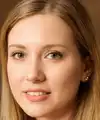Classification Loss Functions in Deep Learning
Classification loss functions are an essential component of deep learning algorithms. These functions are used to measure the accuracy and correctness of the predicted classes in machine learning models.
What are Classification Loss Functions?
In the context of deep learning, classification loss functions quantify the difference between the predicted class probabilities and the true class labels. These functions are designed to minimize the error and improve the overall performance of the deep learning model.
Importance of Classification Loss Functions
Classification loss functions play a vital role in training deep learning models for tasks such as image recognition, text classification, sentiment analysis, and more. They help in determining the error or loss incurred by the model during the learning process, aiding in adjusting the weights and biases of the neural network.
Common Classification Loss Functions
There are different types of classification loss functions used in deep learning. Some popular ones include:
- Binary Cross-Entropy Loss: This loss function is used for binary classification tasks, where the model predicts one of the two possible classes. It measures the divergence between the predicted probability and the actual label.
- Categorical Cross-Entropy Loss: This loss function is applied when the model predicts among multiple classes. It calculates the difference between the predicted class probabilities and the true class labels.
- Sparse Categorical Cross-Entropy Loss: Similar to categorical cross-entropy loss, but used when the true labels are integers instead of one-hot encoded vectors.
- Hinge Loss: This loss function is commonly used in support vector machines (SVMs) for binary classification. It aims to maximize the margin between different classes.
Choosing the Right Classification Loss Function
The selection of an appropriate classification loss function depends on the nature of the problem and the desired outcome. Different loss functions have different characteristics and may perform better in specific scenarios. Deep learning practitioners often experiment with various loss functions to find the one that achieves the best results for their particular task.
Why Assess Candidates for Classification Loss Functions?
Assessing candidates for their understanding of classification loss functions is crucial for organizations looking to hire top talent. Here's why:
-
Enhanced Model Performance: Understanding classification loss functions allows candidates to optimize machine learning models. By assessing this skill, you can ensure that your team has the expertise needed to improve model accuracy and efficiency.
-
Better Decision-Making: Classification loss functions help in analyzing and interpreting data accurately. Assessing candidates for this skill ensures that your organization can make informed decisions based on reliable insights and predictions.
-
Effective Problem Solving: Proficiency in classification loss functions enables candidates to identify and resolve classification problems efficiently. By assessing this skill, you can ensure that your team can tackle complex machine learning challenges with ease.
-
Optimized Model Training: Candidates with a strong grasp of classification loss functions can fine-tune model training to achieve better results. Assessing this skill helps in building models that meet your organization's specific needs and objectives.
-
Quality Model Evaluation: Candidates with knowledge of classification loss functions can evaluate the performance of machine learning models effectively. By assessing this skill, you can ensure that your team can provide accurate and meaningful feedback on model performance.
By assessing candidates' understanding of classification loss functions, your organization can build a skilled team equipped to drive successful machine learning projects and make data-driven decisions. Boost your hiring process with Alooba's assessment platform and identify candidates with expertise in classification loss functions today.
Assessing Candidates on Classification Loss Functions
To evaluate a candidate's knowledge of classification loss functions, it's important to use the right assessment methods. With Alooba's assessment platform, you can effectively assess candidates' understanding of this essential skill. Here are two relevant test types available on Alooba:
-
Concepts & Knowledge Test: This multi-choice test allows you to assess candidates' understanding of classification loss functions at a conceptual level. The test provides customizable questions related to classification loss functions and evaluates candidates' knowledge in this area. It is autograded, saving you time and effort.
-
Written Response Test: In this in-depth test, candidates provide written responses or essays that showcase their comprehension of classification loss functions. You can customize the skills you want to assess within this test and gain a deeper understanding of a candidate's understanding of classification loss functions. This test requires subjective, manual evaluation to ensure accurate assessment.
By utilizing Alooba's platform, you can easily assess candidates' understanding of classification loss functions through targeted tests. These assessments provide valuable insights into a candidate's knowledge and proficiency in this area, helping you identify the most suitable candidates for your organization's needs. Supercharge your hiring process with Alooba and make informed decisions based on real assessment results.
Topics Covered in Classification Loss Functions
Classification loss functions encompass various important subtopics that candidates should be familiar with. When assessing candidates' knowledge in this area, it's helpful to understand the specific topics that fall under the umbrella of classification loss functions. Here are some key areas to consider:
-
Binary Classification: Candidates should have a solid understanding of binary classification, which involves categorizing data into two distinct classes. This includes concepts such as logistic regression, binary cross-entropy loss, and decision boundaries.
-
Multiclass Classification: Multiclass classification deals with scenarios where data needs to be classified into multiple classes simultaneously. Candidates should be knowledgeable about concepts like categorical cross-entropy loss, softmax activation function, and one-hot encoding.
-
Loss Functions Comparison: Candidates should be able to compare and contrast different loss functions used in classification tasks. This includes understanding the advantages and disadvantages of binary cross-entropy loss, categorical cross-entropy loss, and other alternatives.
-
Regularization Techniques: Familiarity with regularization techniques used in classification loss functions is essential. Candidates should grasp concepts like L1 regularization and L2 regularization, and understand their impact on preventing overfitting.
-
Model Evaluation Metrics: Candidates should be familiar with different evaluation metrics used to assess the performance of classification models. This includes accuracy, precision, recall, F1 score, and area under the ROC curve (AUC-ROC).
-
Optimization Algorithms: Having knowledge of optimization algorithms like gradient descent and stochastic gradient descent is crucial to effectively train classification models. Candidates should understand how these algorithms relate to classification loss functions and their optimization objectives.
By assessing candidates' understanding of these specific topics within classification loss functions, you can gain valuable insights into their expertise in this area. Alooba's assessment platform enables you to evaluate candidates on their knowledge of classification loss functions, helping you find the right individuals with the necessary skills for your organization.
Applications of Classification Loss Functions
Classification loss functions have a wide range of applications in the field of machine learning and data analysis. Understanding how to leverage these functions can greatly enhance various processes and tasks. Here are some common applications of classification loss functions:
-
Image Recognition: Classification loss functions are extensively used in image recognition tasks, where the goal is to classify images into different categories. By utilizing loss functions, machine learning models can effectively learn and distinguish between various objects, shapes, and patterns within images.
-
Natural Language Processing (NLP): In NLP tasks, classification loss functions play a significant role. For example, sentiment analysis, where the goal is to determine the sentiment expressed in a text, heavily relies on classification loss functions to classify text into positive, negative, or neutral sentiments. Similarly, text classification tasks rely on these functions to categorize text documents into different classes.
-
Recommendation Systems: Classification loss functions are utilized in recommendation systems to predict users' preferences and make personalized recommendations. By training models with these loss functions, recommendation systems can accurately determine the user's category of interest and suggest relevant items or content accordingly.
-
Anomaly Detection: Anomaly detection involves identifying unusual patterns or outliers within a dataset. Classification loss functions can be used to train models that differentiate between normal and anomalous data instances. By utilizing these functions, anomalies can be effectively detected, helping organizations identify fraudulent transactions, network intrusions, or other unusual behavior.
-
Medical Diagnosis: Machine learning models powered by classification loss functions are used in medical diagnosis tasks. These models learn from patient data and employ classification loss functions to classify diseases, predict patient outcomes, or determine the presence of abnormalities in medical images.
By incorporating classification loss functions into these applications and more, organizations can improve the accuracy, efficiency, and reliability of their machine learning models and data analysis processes. Assessing candidates' understanding of classification loss functions can help ensure you hire individuals who can effectively apply this knowledge to drive success in these areas.
Roles that Require Strong Classification Loss Functions Skills
Proficiency in classification loss functions is highly valuable in several roles where machine learning and data analysis are key components. Here are some roles on Alooba's platform that demand good classification loss functions skills:
-
Data Scientist: Data scientists leverage classification loss functions to build accurate predictive models, classify data, and extract insights from complex datasets.
-
Artificial Intelligence Engineer: AI engineers utilize classification loss functions to train and optimize deep learning models for tasks like image recognition, natural language processing, and recommendation systems.
-
Deep Learning Engineer: Deep learning engineers specialize in developing and implementing neural networks, where classification loss functions are integral for network training and performance evaluation.
-
Machine Learning Engineer: Machine learning engineers utilize classification loss functions to develop robust machine learning models, evaluate their performance, and enhance accuracy in various applications.
Having strong classification loss functions skills is particularly crucial for these roles as they involve working with intricate algorithms, complex datasets, and optimization techniques to achieve accurate and efficient models. By assessing candidates' proficiency in classification loss functions, you can ensure that you hire individuals who are well-equipped to handle the challenges and complexities of these roles effectively.
Associated Roles
Artificial Intelligence Engineer
Artificial Intelligence Engineers are responsible for designing, developing, and deploying intelligent systems and solutions that leverage AI and machine learning technologies. They work across various domains such as healthcare, finance, and technology, employing algorithms, data modeling, and software engineering skills. Their role involves not only technical prowess but also collaboration with cross-functional teams to align AI solutions with business objectives. Familiarity with programming languages like Python, frameworks like TensorFlow or PyTorch, and cloud platforms is essential.
Data Scientist
Data Scientists are experts in statistical analysis and use their skills to interpret and extract meaning from data. They operate across various domains, including finance, healthcare, and technology, developing models to predict future trends, identify patterns, and provide actionable insights. Data Scientists typically have proficiency in programming languages like Python or R and are skilled in using machine learning techniques, statistical modeling, and data visualization tools such as Tableau or PowerBI.
Deep Learning Engineer
Deep Learning Engineers’ role centers on the development and optimization of AI models, leveraging deep learning techniques. They are involved in designing and implementing algorithms, deploying models on various platforms, and contributing to cutting-edge research. This role requires a blend of technical expertise in Python, PyTorch or TensorFlow, and a deep understanding of neural network architectures.
Machine Learning Engineer
Machine Learning Engineers specialize in designing and implementing machine learning models to solve complex problems across various industries. They work on the full lifecycle of machine learning systems, from data gathering and preprocessing to model development, evaluation, and deployment. These engineers possess a strong foundation in AI/ML technology, software development, and data engineering. Their role often involves collaboration with data scientists, engineers, and product managers to integrate AI solutions into products and services.
Related Skills
Ready to Build a Strong Team with Classification Loss Functions Expertise?
Schedule a discovery call with our team to learn how Alooba can help you assess candidates in classification loss functions and other essential skills. Our platform offers customizable tests, objective evaluations, and valuable insights to ensure you hire the right talent for your organization.

























